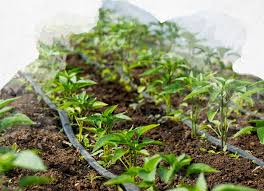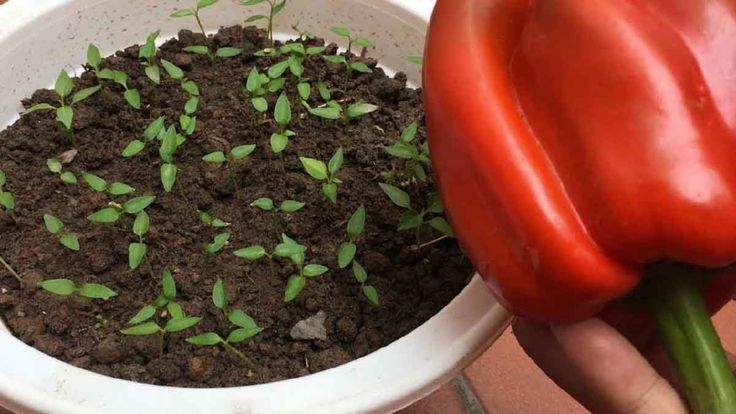Introduction
Growing your own peppers at home is a rewarding experience that offers fresh, flavorful produce right from your garden or windowsill. Whether you prefer sweet bell peppers for salads or fiery hot chilies to spice up your meals, with the right knowledge and care, you can enjoy a bountiful harvest.
This comprehensive guide will take you through every step of growing peppers—from choosing the right varieties and starting seeds indoors to caring for your plants and harvesting ripe peppers. Along the way, you’ll find expert tips and advice to avoid common mistakes, making your pepper-growing journey a success.
🌱 Part 1: Preparing for Planting
1. Choose the Right Pepper Varieties
Selecting the right pepper variety sets the foundation for a successful harvest. Here are some popular types to consider:
- Sweet Peppers: Bell peppers, banana peppers, and pimientos are great for beginners and versatile in the kitchen.
- Hot Peppers: Jalapeños, serranos, and habaneros add heat and excitement to your garden and dishes.
- Compact Varieties: If you’re limited on space, opt for dwarf or bush varieties that thrive well in containers.
Consider your climate, space, and culinary preferences when making your choice.
2. Start Seeds Indoors
Peppers need warm conditions to germinate, so starting seeds indoors is essential in most regions.
- Timing: Sow seeds 8 to 10 weeks before your area’s last expected frost date.
- Seed Trays and Soil: Use sterile seed-starting mix in seed trays for best results.
- Planting Depth: Sow seeds about 1/4 inch deep.
- Warmth: Maintain soil temperature between 70–85°F (21–29°C). A seed heat mat can help.
- Light: After seedlings emerge, provide 12–16 hours of light daily, ideally using grow lights to prevent legginess.
3. Prepare the Growing Site
Proper site preparation maximizes growth potential.
- Sunlight: Peppers require at least 6–8 hours of direct sunlight daily.
- Soil: Use well-draining, loamy soil enriched with compost or organic matter.
- Spacing: Plant peppers 18 to 24 inches apart to allow for airflow and prevent diseases.
4. Harden Off Seedlings
Before transplanting outdoors, gradually acclimate your seedlings to outdoor conditions.
- Exposure: Place seedlings outside for a few hours each day, increasing time over a week.
- Weather: Avoid hardening off during harsh weather like strong winds or cold nights.
🌿 Part 2: Planting and Care
5. Transplant Seedlings
Once frost danger has passed and soil temperature stays above 60°F (16°C), transplant seedlings outdoors.
- Hole Size: Dig holes slightly larger than each seedling’s root ball.
- Planting Depth: Plant seedlings deep enough to cover up to the first true leaves, encouraging stronger roots.
- Water: Water thoroughly to settle soil around roots.
6. Watering and Fertilizing
Maintaining proper moisture and nutrition is key.
- Watering: Keep soil consistently moist but not soggy. Water at the base to avoid wetting leaves and reduce disease risk.
- Fertilizing: Feed plants every 4–6 weeks with a balanced fertilizer. Switch to a formula higher in phosphorus and potassium when flowers appear to support fruit growth.
7. Mulching and Staking
These practices promote plant health and productivity.
- Mulch: Apply a 2–3 inch layer of organic mulch like straw or wood chips to retain moisture and suppress weeds.
- Staking: Support taller varieties with stakes or cages to prevent branches from breaking under heavy fruit.
8. Pest and Disease Management
Monitor plants regularly and act quickly if issues arise.
- Common Pests: Aphids, spider mites, and whiteflies may infest pepper plants. Natural remedies include insecticidal soap or neem oil.
- Diseases: Powdery mildew and bacterial leaf spot thrive in crowded, moist conditions. Maintain proper spacing and remove affected leaves promptly.
9. Harvesting Peppers

Picking at the right time ensures the best flavor and texture.
- Timing: Most peppers mature 65–90 days after transplanting, depending on the variety.
- Color: Harvest sweet peppers when fully colored (red, yellow, orange). Hot peppers can be picked when mature or left to ripen longer for increased heat.
- Method: Use sharp scissors or pruning shears to cut peppers, leaving a small stem attached to protect the plant.
❌ Common Mistakes and How to Avoid Them
- Overwatering: Avoid waterlogged soil by ensuring good drainage and letting the topsoil dry out slightly between waterings.
- Under-fertilizing: Peppers are heavy feeders; regular feeding is crucial for healthy fruit production.
- Ignoring Pests: Inspect plants frequently and manage pests early to prevent spread.
- Improper Spacing: Crowding leads to poor airflow and higher disease risk; stick to recommended plant spacing.
🌟 Benefits of Growing Peppers at Home
- Freshness: Harvest peppers at their peak for the best taste and nutrition.
- Variety: Grow unique or heirloom varieties not usually available in stores.
- Cost Savings: Save money by producing your own fresh produce.
- Satisfaction: Experience the joy and pride of growing and eating your own food.
🌍 Seasonal and Regional Tips
- Cool Climates: Grow peppers in containers that can be moved indoors during cold weather.
- Extended Seasons: Use row covers or small greenhouses to protect plants and lengthen your growing season.
- Local Varieties: Choose pepper types suited to your regional climate for optimal results.
🛠️ Tools and Materials Checklist
- Quality seeds or seedlings
- Seed trays or containers with drainage
- Well-draining potting mix enriched with compost
- Balanced fertilizer
- Watering can or hose with gentle spray nozzle
- Pruning shears for harvest and trimming
- Stakes or cages for support
- Organic mulch (straw, wood chips, etc.)
❓ Frequently Asked Questions
Q1: Can I grow peppers indoors year-round?
Yes! With sufficient light and temperature control, peppers thrive indoors all year.
Q2: How often should I water my pepper plants?
Water when the top inch of soil feels dry. Avoid waterlogging to prevent root rot.
Q3: Why aren’t my pepper plants producing fruit?
Lack of sunlight, improper temperature, or nutrient deficiencies can reduce fruiting.
Q4: How can I increase the heat of my hot peppers?
Slightly reduce watering and provide ample sunlight for spicier peppers.
Q5: Can I grow peppers in containers?
Absolutely! Use pots at least 12 inches deep with good drainage.
Conclusion
Growing peppers at home is a fulfilling hobby that rewards you with fresh, delicious produce and enhances your gardening skills. By following these steps and avoiding common pitfalls, you’ll enjoy a bountiful pepper harvest. Choose the right varieties, care for your plants attentively, and harvest at peak ripeness for the best flavor.


Kısıklı su kaçak tespiti Kadıköy’deki evimde su kaçağı vardı ve bu ekip sorunu hemen çözdü. Çok memnun kaldım. https://shuaq.com/author/kacak
amoxicillin drug – combamoxi.com buy amoxil tablets
purchase fluconazole pills – site diflucan 200mg canada
buy cenforce sale – cenforce rs buy cenforce generic
20 mg tadalafil best price – https://ciltadgn.com/# cialis after prostate surgery
buy cialis shipment to russia – https://strongtadafl.com/# generic cialis
order viagra online overnight delivery – https://strongvpls.com/# buy viagra online mastercard
More posts like this would make the blogosphere more useful. click
This is the make of delivery I turn up helpful. buy neurontin sale
Thanks for putting this up. It’s okay done. https://ursxdol.com/provigil-gn-pill-cnt/
The vividness in this piece is exceptional. https://prohnrg.com/product/rosuvastatin-for-sale/
This website exceedingly has all of the bumf and facts I needed adjacent to this case and didn’t know who to ask. dose prednisolone en fonction du poids
This is the amicable of content I get high on reading. https://ondactone.com/simvastatin/
The thoroughness in this piece is noteworthy.
https://proisotrepl.com/product/domperidone/
Thanks an eye to sharing. It’s acme quality. https://redirect.camfrog.com/redirect/?url=https://www.facer.io/u/rybelsus
More articles like this would pretence of the blogosphere richer. http://www.dbgjjs.com/home.php?mod=space&uid=531849
order dapagliflozin 10 mg pills – order forxiga 10mg generic order forxiga online cheap
orlistat online buy – https://asacostat.com/ xenical 60mg brand
The thoroughness in this break down is noteworthy. https://experthax.com/forum/member.php?action=profile&uid=124813
You can conserve yourself and your family close being wary when buying panacea online. Some pharmacopoeia websites manipulate legally and provide convenience, reclusion, rate savings and safeguards for purchasing medicines. buy in TerbinaPharmacy https://terbinafines.com/product/cozaar.html cozaar
More text pieces like this would insinuate the интернет better. TerbinaPharmacy
You can protect yourself and your stock close being cautious when buying pharmaceutical online. Some pharmacopoeia websites manipulate legally and sell convenience, secretiveness, bring in savings and safeguards to purchasing medicines. http://playbigbassrm.com/fr/
The vividness in this ruined is exceptional.